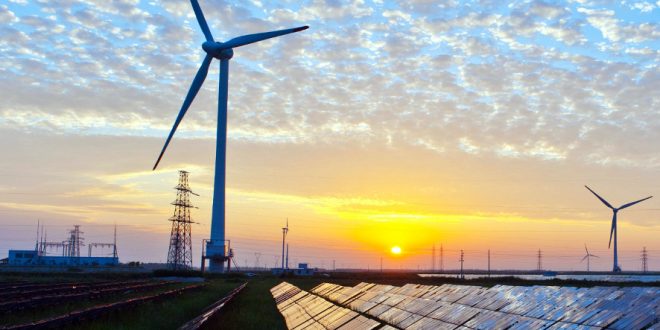As the world rapidly invests in renewables, in a bid to transition away from fossil fuels to a greener future, companies and governments are not just funding projects at home but also abroad. Several companies around the globe have highlighted India as a key market for their renewable energy investment, thanks to its highly favourable weather conditions and willingness to rapidly develop its clean energy industry.
At the end of last month, Norway announced heavy solar investment in India, highlighting the country as a priority market for its renewable energy growth. Funding comes from Norway’s Climate Investment Fund (CIF) and its biggest pension company, KLP, with plans to develop a 420MW solar energy project in Rajasthan. The companies are expected to spend $35 million on the development, with a 49 percent stake in the Thar Surya 1 project, alongside Italian firm Enel Green Power. But the investment doesn’t stop here, with the Norwegian Embassy earmarking $1 billion in CIF finance for renewable energy projects in India over the next half a decade, calling it a “priority market”.
And Norway is not the first investor to see India as a key market for renewable energy development. Foreign investors have been partnering with local energy producers to fund the development of India’s solar power sector, already attracting funding from Singapore and Abu Dhabi, banks such as Goldman Sachs, funds like Copenhagen Infrastructure Partners (CIP), and utilities such as Japan’s JERA. JP Morgan, Standard Chartered and other banks are also offering green bonds for renewable energy projects.
India has seen greater foreign investment in its renewables sector after its Prime Minister Narendra Modi highlighted the need for increased funding from overseas at the COP26 climate summit in 2021 and again at the G7 summit in June. In fact, FDI in India’s renewable energy sector increased by 100 percent to $1.6 billionin FY2021-2022, compared to $797.21 million the previous year.
Some of the perks of investing in India, as opposed to other Asian markets such as China, are the potential of owning up to 100 percent of any renewable energy project in which a foreign company has a stake and a 25-year power purchase agreement (PPA). However, some challenges persist, including issues with payments, land acquisition and grid access.
India has continually highlighted its openness to the development of strong renewable energy industry in recent years, aiming to attract domestic and foreign investment to become a green energy hub in Asia. The country’s Ministry of New and Renewable Energy points out that India’s solar capacity has risen from 2.6 gigawatts to over 46 gigawatts in the last seven and a half years, with aims to achieve 175 GW in renewable energy capacity this year. Although India continues to rely heavily on fossil fuels, including coal, for its domestic energy consumption.
And it’s not just foreign companies investing in the country’s renewables industry, with the JSW Group, one of India’s largest conglomerates, announcing last month plans to acquire Indian renewables company Mytrah Energy for $1.32 billion. Mytrah currently has a renewable energy portfolio of 1.75GW, including 17 wind energy and 21 ground-monitored solar assets across nine states. JSW has 9.1 GW of power operational or under construction, 65 percent of which will be renewable energy.
TATA Power and Adani Green have announced similar moves into the world of renewables in the Indian market in recent years. And, last month, Shell finalised its $1.55 billion acquisition of Indian renewable energy firm Sprng Energy from Actis Solenergi. The purchase of its solar and wind assets will triple Shell’s renewable energy capacity in India. This is part of Shell’s big plan to achieve net-zero carbon emissions by 2050.
Beyond solar power, India is also expanding its wind energy sector and recently launched a green hydrogen policy, as well as continuing to develop its renewable battery potential. India announced in 2021 the aim of achieving net-zero carbon emissions by 2070, starting with developing 500GW of renewable energy capacity by the end of the decade. But India is currently the third biggest emitter of CO2 in the world, although this is largely due to its enormous population. This means that to achieve its carbon goal India will need to develop a strong renewable energy industry and reduce its reliance on fossil fuels, largely through foreign investment. The International Energy Agency estimates that India will require $160 billion a year to reach its climate goals.
Greater levels of domestic and foreign investment could see India becoming a major renewable energy hub over the next couple of decades. FDI in solar and wind energy, green hydrogen, renewable battery manufacturing, and several other innovative green energy projects could help to produce the clean power required for India to transition away from fossil fuels, as well as export its energy to other countries worldwide in support of a global green transition.

 Iran Energy News Oil, Gas, Petrochemical and Energy Field Specialized Channel
Iran Energy News Oil, Gas, Petrochemical and Energy Field Specialized Channel



